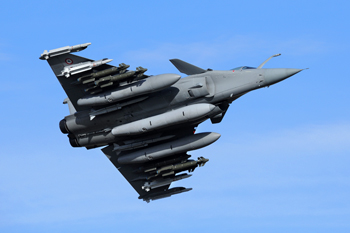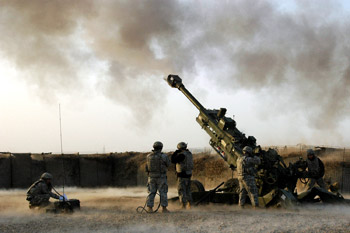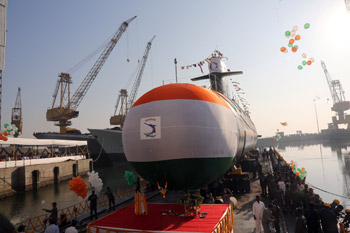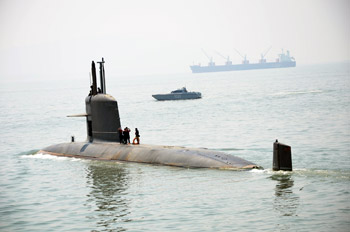INDIAN ARMED FORCES CHIEFS ON
OUR RELENTLESS AND FOCUSED PUBLISHING EFFORTS

SP Guide Publications puts forth a well compiled articulation of issues, pursuits and accomplishments of the Indian Army, over the years

I am confident that SP Guide Publications would continue to inform, inspire and influence.

My compliments to SP Guide Publications for informative and credible reportage on contemporary aerospace issues over the past six decades.
- Prime Minister witnesses 'Bharat Shakti' – a Tri-Services Firing and Manoeuvre Exercise in Pokhran, Rajasthan
- Interim Defence Budget 2024-25 — An Analysis
- Union Defence budget 2024
- Prime Minister Modi Commemorates Indian Navy Day in a Grand Ceremony
- Prime Minister Modi Flies in the LCA Tejas
- New Chapter in India-Italy Defence Ties
- Airpower beyond Boundaries
Military modernisation kaput – And the curse of committees
 |
By Lt. General P.C. Katoch (Retd) Former Director General of Information Systems, Indian Army |




The Parliamentary Standing Committee on Defence has slammed the government on March 9 through its report tabled in Parliament on Demands for Grants for 2017-18, for its lack adhocism, casual and lackadaisical approach saying it would adversely affect the country’s defence preparedness as well as hit the morale of the armed forces. Media may enjoy using the term “slammed” but what is the use? This committee, like all other committees, is just an advisory body whose observations and recommendations are consigned to the cupboard or trash can without much ado. It is certainly not akin to the Senate Armed Services Committee of the US, to whom the US Government is answerable, which should be the case in any democracy. Isn’t it a shame that in a paper submitted to the Indian Government, the National Security Council had appreciated Parliament as the top target of terrorists three years before the attack that found us totally unprepared? But military modernisation is not the only issue that is hitting the morale of the armed forces, as indicated by the above committee.
There are many issues contributing to this, some prominent ones being: (1) Armed Forces Tribunal directed the government to implement Non-Functional Upgradation (NFU) in respect of the military, which has already been granted to the Indian Administrative Service (IAS) and other allied services including the Indian Police Service (IPS), but government has failed to act; (2) military is the only service downgraded in status by the Seventh Central Pay Commission (CPC) including reduction in allowances and reduction in disability pensions; (3) the Ministry of Defence’s (MoD) October 18, 2016, letter lowering status of armed forces that adds to existing functional woes of civilian officers with lower designation refusing to take directions from military officers, now claiming superiority having been granted NFU and Seventh CPC; (4) refusal of MoD to cancel the October 18, 2016, letter on grounds it is for assigning duties and responsibilities with respect to Armed Forces Civil Services Officers (AFCSO) posted to service HQs — implying this state of affairs is acceptable to the government; and, (5), a Member of Legislative Council (MLC) from Solapur, Maharashtra, publicly abuses security forces by asking how soldiers’ wives have babies when soldiers are posted on borders for many years, and this rat is let off because of vote bank politics.
With predictable difference of opinions, any coherent national security strategy must have a long-term thought process and vision, the basis for which is strategic culture
If the youth in universities are being programmed for shouting anti-India slogans as part of hybrid warfare of our enemies, so is the move to downgrade military in stature even as it controls increased hostility from across borders. Whether certain government functionaries are gullible innocents or willing collaborators of our adversaries is the moot question. Getting back to the snubbing by the Parliamentary Standing Committee on Defence to the government, the highlights include: in terms of modernisation demands for FY 2017-18, the Army, Navy and Air Force have only received 60 per cent, , 67 per cent and 54 per cent respectively; only Rs. 86,488 crore has been earmarked for modernisation from the total defence outlay of Rs. 2,74,000 crore — what makes matters worse is bulk of this capital will be used to pay “committed liabilities” of earlier arms contracts instead of new projects; Army received only Rs. 25,254 crore against its demand of Rs. 42,500 crore, and with committed liabilities of Rs. 23,000 crore it leaves only Rs. 2,254 crore for new projects — which is likely to affect both modernisation and operational preparedness; IAF that should have a 458 aircraft force by 2027 is making do with just 235 aircraft at present, with many of them on their last legs; huge deficiencies in authorised and existing levels of ships, submarines and aircraft, and; the Committee has asked government to provision at least another Rs. 13,000 crore additional capital for modernisation.
As per media, MoD has written to the Ministry of Finance (MoF) for additional funds but that may be the end of the story what with the euphoria of the recent elections. India somehow has not been able to strike the appropriate balance between economic development and national security. With predictable difference of opinions, any coherent national security strategy must have a long-term thought process and vision, the basis for which is strategic culture. We neither have a national security strategy and while we desire global status, we take decisions in the cloistered confines of MoD and MoF, which is hardly appropriate.
The views expressed herein are the personal views of the author.





